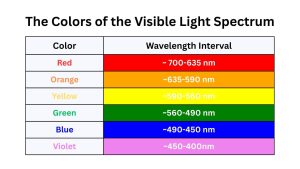Rayleigh Scattering Explained: Why The Sky is Blue.

Introduction
Have you ever wondered why the sky is blue? Why not red or yellow?
This phenomenon is explained by Rayleigh Scattering.
This has to do with the earth’s atmosphere and how light interacts with it.
Let’s dive into the fascinating science behind why the sky appears blue—a phenomenon rooted in light and atmospheric physics, Rayleigh Scattering
What is Rayleigh Scattering?

Rayleigh Scattering is the scattering of light (or other electromagnetic radiation) by particles that are smaller than the wavelength of the light. In simpler terms, it’s like when light bumps into tiny things and gets scattered around, causing it to look a certain color.
When sunlight enters the Earth’s atmosphere, it interacts with air molecules. This interaction disperses light in various directions. Sunlight contains all the colors in the visible spectrum collectively known as white light. Light with shorter wavelengths is scattered more than light with longer wavelength.

Violet light has the shortest wavelength in the light spectrum around 380-450 nanometers.
Blue light being the second shortest with wavelength between 450 and 495 nanometers.
This means that violet and blue light, compared to other colors in the light spectrum, are scattered and more pronounced.
So why is the sky not violet but… blue?
Why is the Sky Blue? The Role of the Sun, Atmosphere, and Human Eye

If violet light scatters even more than blue, why doesn’t the sky appear violet? The sun, our eyes, and atmosphere, together, these factors make the sky appear blue rather than violet.
The Sun
The sun emits more blue light than violet light. Therefore, the blue light that scatters into our view is more abundant. The sun’s intensity spectrum also plays a role. The amount of violet light in sunlight is lower than the amount of blue light.
Atmosphere
The earth’s atmosphere absorbs short wavelength from the sun like UV light (Ultraviolet light) and some violet lights are also absorbed in the process reducing what reaches our eyes.
Human Eye
Our eyes are more sensitive to blue light than violet. This means we perceive the blue-scattered light as more dominant even though violet light is also scattered. This is because our eyes have specific cells that are highly attuned to the blue light nanometer range.
Meet the Scientist Behind Rayleigh Scattering

Rayleigh Scattering is named after the 19th-century British physicist John William Strutt, 3rd Baron Rayleigh (12 November 1842 – 30 June 1919). He won the Nobel Prize in Physics in 1904 for his investigations of the densities of the most important gases. An investigation that led him to the discovery of Argon.
He is also renowned for his work on light scattering and his mathematical formulation describing the relationship between intensity of light and its wavelength.
He is also known for his work in various fields, including sound, optics, wave theory, color vision, and electrodynamics.
Conclusion
Rayleigh Scattering shows us how something as ordinary as a blue sky is deeply rooted in physics, sunlight, and human perception. From tiny air molecules to the limits of our vision, this beautiful effect is a perfect example of everyday science at work.
So, the next time you look up at the sky, remember — it’s Rayleigh Scattering that paints it blue, not just the ocean.

